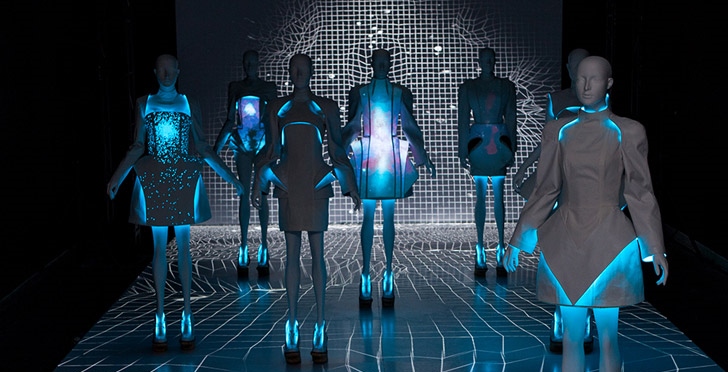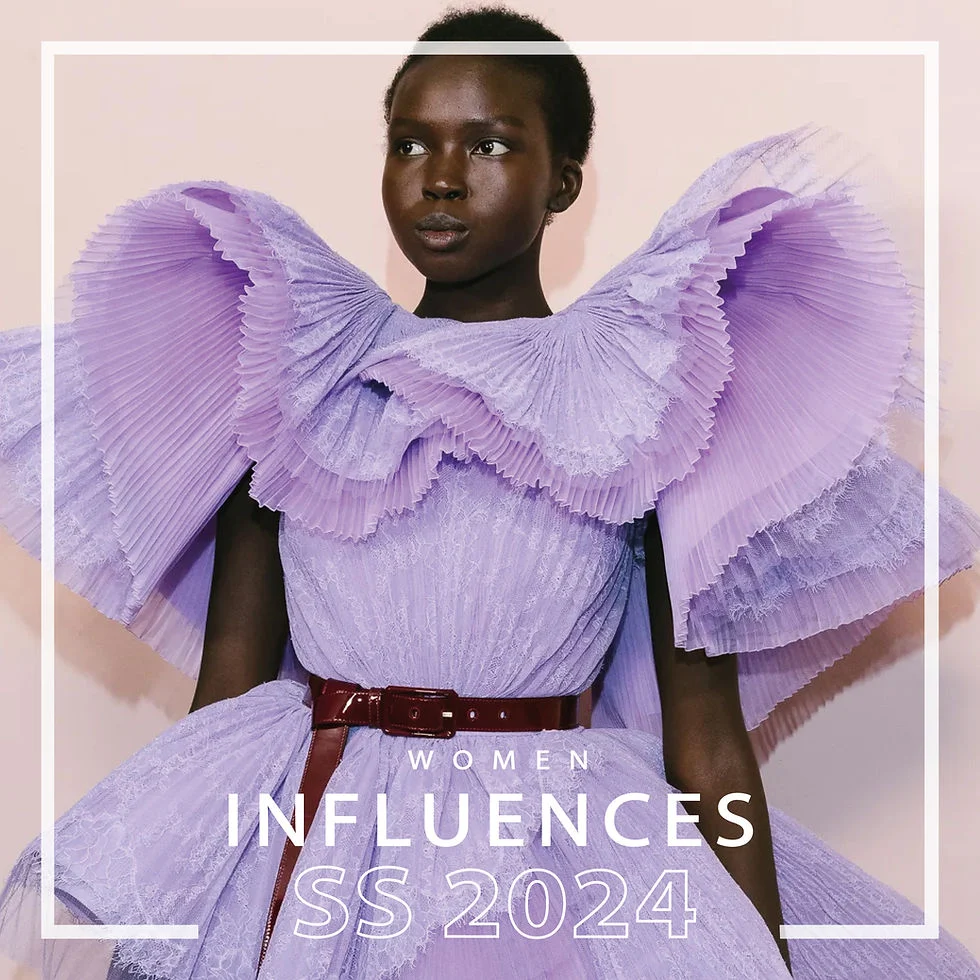In recent years, the intersection of technology and fashion has become increasingly prominent, leading to a transformative era in high fashion. How technology is influencing the future of high fashion is a question that resonates with designers, consumers, and industry experts alike. From artificial intelligence and 3D printing to virtual reality and sustainable practices, technology is reshaping the way we perceive, create, and consume fashion. This article delves into the myriad ways in which technological advancements are revolutionizing the fashion landscape, making it more innovative and accessible than ever before.
As we explore the future of high fashion, readers will discover how cutting-edge technologies are enhancing the design process, allowing for greater creativity and personalization. We will examine the role of AI in predicting trends and consumer preferences, as well as how brands are leveraging data analytics to make informed decisions. Additionally, the article will highlight the growing importance of sustainability in fashion, showcasing how technology is paving the way for eco-friendly practices that benefit both the industry and the planet.
Furthermore, we will discuss the impact of digital platforms and social media on fashion marketing and consumer engagement, illustrating how these tools are changing the way brands connect with their audiences. By the end of this article, you will have a comprehensive understanding of how technology is not just influencing, but redefining the future of high fashion. Join us on this exciting journey and discover the innovations that are set to shape the fashion world for years to come!
As the fashion industry evolves, technology plays a pivotal role in shaping its future. From innovative materials to digital marketing strategies, the intersection of technology and high fashion is creating new opportunities and challenges. This article explores various aspects of this dynamic relationship.
The Rise of Sustainable Fashion Technology
Sustainability has become a crucial focus in high fashion, and technology is at the forefront of this movement. Brands are increasingly adopting eco-friendly materials and production processes, utilizing technology to minimize waste and reduce their carbon footprint. Innovations such as 3D printing and biofabrication are enabling designers to create garments that are not only stylish but also sustainable.
Moreover, technology facilitates transparency in the supply chain, allowing consumers to make informed choices. Blockchain technology, for instance, can track the journey of a garment from production to retail, ensuring ethical practices are upheld. As consumers become more environmentally conscious, the demand for sustainable fashion technology will continue to grow.
Virtual Reality and Augmented Reality in Fashion
Virtual reality (VR) and augmented reality (AR) are transforming the way consumers experience fashion. These technologies allow brands to create immersive shopping experiences, enabling customers to try on clothes virtually before making a purchase. This not only enhances customer engagement but also reduces the likelihood of returns, which is a significant issue in the fashion industry.
Additionally, AR can be used in marketing campaigns, allowing consumers to interact with products in innovative ways. For example, brands can create AR apps that let users see how a piece of clothing would look on them without physically trying it on. This integration of technology into the shopping experience is likely to become a standard practice in high fashion.
The Impact of Artificial Intelligence on Design
Artificial intelligence (AI) is revolutionizing the design process in high fashion. Designers are leveraging AI tools to analyze trends, predict consumer preferences, and even create new designs. By processing vast amounts of data, AI can identify patterns that may not be immediately apparent to human designers, leading to more informed decision-making.
Furthermore, AI-driven algorithms can assist in personalizing the shopping experience for consumers. By analyzing past purchases and browsing behavior, AI can recommend products tailored to individual tastes, enhancing customer satisfaction and loyalty. As AI technology continues to advance, its influence on fashion design will only grow stronger.
E-commerce Innovations in High Fashion
The rise of e-commerce has significantly changed the landscape of high fashion. With the advent of online shopping, brands are now able to reach a global audience, breaking down geographical barriers. Technology has enabled the development of sophisticated e-commerce platforms that provide seamless shopping experiences, from browsing to checkout.
Moreover, innovations such as mobile shopping apps and social media integration have made it easier for consumers to discover and purchase high fashion items. Brands are also utilizing data analytics to understand consumer behavior better, allowing them to tailor their marketing strategies effectively. As e-commerce continues to evolve, it will play an increasingly vital role in the future of high fashion.
The Role of Social Media in Fashion Marketing
Social media has become an essential tool for fashion marketing, allowing brands to connect with consumers in real-time. Platforms like Instagram and TikTok have transformed how fashion is promoted, with influencers and user-generated content playing a significant role in shaping trends. Brands are now investing in social media strategies to engage their audience and build brand loyalty.
Additionally, social media analytics provide valuable insights into consumer preferences, enabling brands to refine their marketing efforts. The ability to reach a targeted audience through social media advertising has made it a powerful tool for high fashion brands looking to increase their visibility and sales.
3D Printing and Customization in Fashion
3D printing technology is revolutionizing the way garments are produced, allowing for greater customization and efficiency. Designers can create intricate designs that would be difficult or impossible to achieve through traditional manufacturing methods. This technology also enables on-demand production, reducing waste and inventory costs.
Furthermore, 3D printing allows consumers to personalize their fashion items, creating a unique shopping experience. Brands that embrace this technology can cater to individual preferences, setting themselves apart in a competitive market. As 3D printing continues to advance, its impact on high fashion will become increasingly significant.
The Future of Fashion Shows and Digital Runways
Fashion shows have traditionally been a cornerstone of the high fashion industry, but technology is changing how these events are conducted. Digital runways and virtual fashion shows have emerged as viable alternatives, allowing brands to reach a wider audience without the constraints of physical venues. This shift has been accelerated by the COVID-19 pandemic, which forced many brands to adapt to virtual formats.
Digital fashion shows also provide opportunities for innovative presentations, incorporating multimedia elements that enhance the viewer experience. As technology continues to evolve, the future of fashion shows will likely be a blend of physical and digital experiences, offering new ways for brands to showcase their collections.
The Integration of Wearable Technology in Fashion
Wearable technology is becoming increasingly popular in the fashion industry, merging style with functionality. From smartwatches to fitness trackers, consumers are looking for fashion items that offer technological benefits. Designers are now incorporating tech features into their collections, creating garments that not only look good but also serve practical purposes.
This integration of technology into fashion opens up new possibilities for innovation, allowing brands to create products that enhance the consumer experience. As wearable technology continues to advance, its presence in high fashion will likely expand, influencing design and consumer preferences.
| Aspect | Description |
|---|---|
| Digital Design | Advanced software tools allow designers to create intricate patterns and designs digitally, streamlining the design process and enabling rapid prototyping. |
| 3D Printing | 3D printing technology is revolutionizing the production of garments and accessories, allowing for custom designs and reducing waste in the manufacturing process. |
| Virtual Reality (VR) | VR is being used for immersive fashion shows and virtual fitting rooms, enhancing customer experience and engagement with brands. |
| Augmented Reality (AR) | AR applications enable customers to visualize how clothing will look on them before making a purchase, improving online shopping experiences. |
| Sustainable Practices | Technology is facilitating sustainable fashion through innovations like biodegradable materials and eco-friendly production methods, addressing environmental concerns. |
| Data Analytics | Fashion brands are leveraging data analytics to understand consumer preferences and trends, allowing for more targeted marketing and inventory management. |
| Blockchain | Blockchain technology is being used to enhance transparency in the supply chain, ensuring authenticity and ethical sourcing of materials. |
| Social Media Influence | Platforms like Instagram and TikTok are shaping fashion trends and consumer behavior, with influencers playing a significant role in brand promotion. |
This HTML document provides a structured overview of how technology is influencing the future of high fashion, presented in a clear and informative table format.



